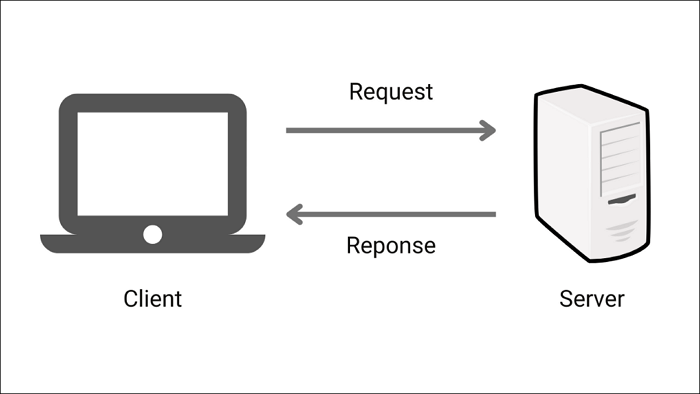What is a Client Server Network? How Does It Work?
The advancement of technology has enabled the development of computer network connections, reducing the cost of hardware and allowing large-scale organizations and businesses to interact across various locations through shared databases.
A client-The client-server network model is a system that offers guaranteed benefits, including security controls that make it preferable to other existing network models. This article will provide a detailed explanation of the features peculiar to the client-server network and how the system operates.
What Is a Client-Server Network?
Clients are end-Clients are users who request data or services made available by a server. The server, a computer, interacts with all clients.
A client-A server network provides clients with access to shared files and resources from the server, responding to client requests and ensuring connection security. This interaction takes place over a Local Area or Wide-Area Network, which serves as the communication channel between the server and clients.
This network also regulates traffic between clients and servers, or servers to servers. A designated server holds a client's request until the interaction is completed, allowing the network to establish and sustain the connection until the task is accomplished.

The client-server network model has several advantages, including efficient resource utilization, scalability, and flexibility. However, it also has some disadvantages, such as security risks, high maintenance costs, and potential bottlenecks in the server.
| Advantages | Disadvantages |
|---|---|
| This network ensures that only authorized users can access the resources and services shared in the network, with implemented security controls for access. | The restrictions make it difficult to modify the shared documents or information within the network. |
| A client-A server network is easy to set up and configure, and the simplicity of having only one server makes troubleshooting less complicated. | The model setup and maintenance is cost-intensive, requiring strong networks that are often expensive and not affordable for some users. |
| Hosting all information on one central server makes problems easier to resolve, allowing for faster management operations, and regular updates are not cost-intensive. | A disruption in the connection can prevent clients from accessing necessary information, potentially putting organizations or businesses at risk. |
| The network model offers greater flexibility because interactions are created only when needed, rather than being fixed, allowing for more modular applications and easier software creation. | A competent network manager should be hired to resolve any error once it occurs, as servers run continuously and require proper maintenance. |
| The client and server can communicate efficiently, with no physical barriers hindering data transfer. | Client-Server networks are not recommended for small-scale networks that don't need strict security protocols. |
| The network can be expanded without disrupting the existing system, allowing for the addition of network segments, servers, and computers without causing downtime. | This system is susceptible to overloading if it cannot access the necessary resources to handle all client requests simultaneously, potentially causing the connection to break down if all clients attempt to interact at the same time. |
| In client-server networks, retrieving backup data is straightforward and only requires access to the single server, unlike other networks where backups need to be retrieved from every individual workstation. | The clients are not allowed to request or provide services that are not explicitly granted by the central server. |
How Does Client Server Network Work?
The user device, such as a computer or mobile device with an app, sends a request to the host server, awaits a response, and then disconnects from the network. This process is determined by the client's bandwidth, which affects the speed of delivery.
The model structure is used for both Local Area Networks (LANs) and the internet, where users interact with servers using the TCP/IP protocol. This protocol segments data into deliverable packets and controls their transmission, flow, and receipt, making it a connection-oriented protocol.
The IP protocol treats each request packet as individual units of data and doesn't establish a connection between endpoints, whereas both protocol stacks have elements of the network layers in the OSI communication model.
What Are the Types of Servers?
Clients rely on computer networks for data distribution, and servers decide whether to drop, accept, or refuse request packets from users. A well-configured server can end a connection without obstructing the system, and different types of servers are used for various purposes.
1. Print servers
Servers can serve multiple clients in close proximity, while computers in a department can share a printer via network connections.
2. Web servers
Computers and internet websites interact to share data stored on web servers, with the HTTP code facilitating the retrieval of this information into user devices.
3. Mail servers
These servers allow users to access email services without needing to install any software.
4. Gaming servers
These servers allow clients to connect to large gaming networks, making multi-player games possible.
5. Virtual servers
Virtual machines can be run on a single hardware, with data being processed and stored in virtual spaces rather than physical ones.
Final Words
Client-Server networks enable multiple users to connect and share data through a central server, offering advantages over peer-to-peer systems. This model allows for enhanced connectivity and data sharing, which is regulated by the TCP/IP protocol that ensures the transmission of packets between devices.
A client-server network provides maximum security to organizations within the network and scrutinizes client access, but it also has some drawbacks.
Related Articles
- What Is Differential Backup? Definition and Comparison
- What is USB-C? [2022 All You Need to Know]
- What Is Immutable Backup? [All You Need to Know]
- What Is NFS and How Does It Work? [This Might Help You]